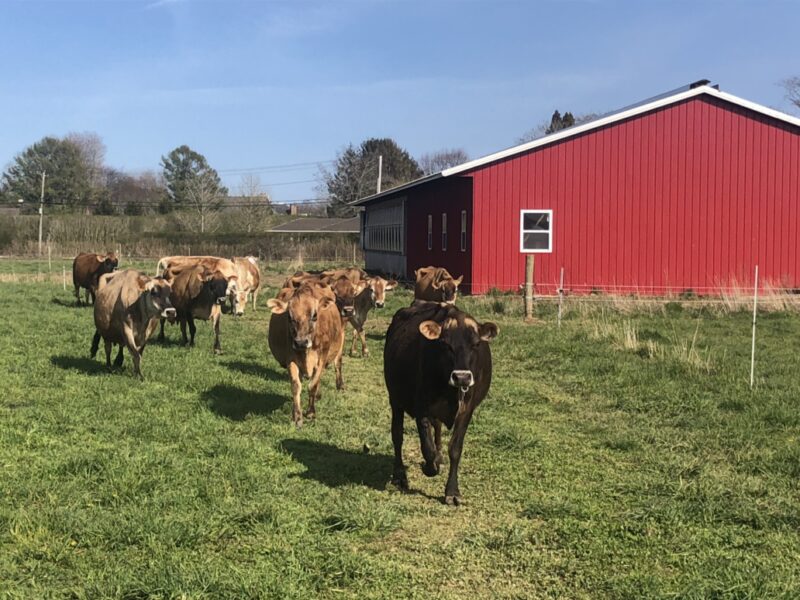

“We’re walking when we should be sprinting” — Intergovernmental Panel on Climate Change Chairman Hoesung Lee, describing how insufficient current plans are to tackle climate change.
Usually as we draw closer to Earth Day, I suggest making small quotidian changes… step by baby step… bit by bit… blah, blah, blah. The thing about making small changes is that, well, they’re small.
If you’ve checked the weather disaster forecast lately, this isn’t the time for incremental change. Having just passed a one degree Celsius rise in temperature, we’re already experiencing record breaking heatwaves, monster storms in California, species die off, water shortages, fires burning as far north as the Arctic tundra and floods devastating even the most well prepared countries. According to the World Health Organization, “In two years, half of the world’s population will live in, ‘water stressed areas.’
This kind of apocalypse will not be reversed with monarch-friendly flowers and composting. It’s time for us to put on our big kid planet-saving pants and make real changes.
Here are the five most important changes individuals can make. They’re at the top of every climate scientist’s list. They can all be done within your home, car and mental bandwidth. And most of them pay off financially.
1. Throw away less food:
Cutting food waste in the U.S. is recognized as the number one way to reduce greenhouse gas emissions. With every scrap of food we squander, we’re also wasting the resources that went into it: seeds, fertilizer, water, and the fossil fuel it took to grow, process, package, transport, prepare and store. Then, when food rots in a landfill, it produces methane.
The basics for avoiding food waste are simple. Know what you have, buy what you need and eat what you buy. Keep food fresh. Or throw it in the freezer. And as a last resort, compost the leftovers.
But beyond these no-nonsense tips, “no waste cooking” is now being approached as a creative challenge. Just ask any high end chef. “Make a game of using everything,” recommends New York Times restaurant critic Tejal Rao. “When you start to experiment with this odds and ends kind of cooking, you discover that what you already have turns out to be what you need.”
Private chef, Ellen Greaves makes what she calls, “Must Go soup,” whose “recipe” is always different. She likes to go on refrigerator explorations for what she needs. There are a slew of new cookbooks out now about using everything — apple cores, spent lemons and even corn cobs. Corn cob jelly, anyone?
2. Make your house more energy efficient:
Consider solar. While the price of fossil fuel is always high on Long Island, the sun is free, and getting cheaper all the time. The cost of solar panels keep dropping and now there’s a federal tax credit that covers 30 percent of the cost. Solar starts to compensate for your investment in about seven years. Since panels typically have a life span of 30 to 40 years, so you’re saving money for 23 to 33 years.
Upgrade to more energy efficient appliances. PSEG will pay for an energy audit to identify where your house is losing energy, what really needs to be upgraded (or not!) and then they help you find clever ways to get the government to pay for it.
Since over half of the energy a home uses is in heating and cooling, the most effective change is replacing your older oil furnace with an electric heat pump. Or upgrade your hot water heater to an electric. According to energy.gov, electric heat pump water heaters are two to three times more energy-efficient.
Choose more energy efficient small appliances. Today’s refrigerators, for example, now use 40 to 60 percent less energy than those manufactured before the year 2000. New York State is giving rebates of up to $5,000 and the fed is offering a 30 percent tax rebate on a long laundry list of home appliances and upgrades.
Builders tell me that adding insulation and blocking wind infiltration is just as important as upgrading utilities. Green Team’s John Cody compares a well-protected house to a Patagonia jacket. “To stay warm you need the insulation of a sweater, but the air-tight resistance of the outer windbreaker.”
3. Make your next car an EV:
The transportation sector is one of the biggest sources of carbon emissions in the U.S., and ground level ozone pollution has become a huge issue in Suffolk County.
I stopped into the Mercedes-Benz dealership in Southampton and asked product concierge Christian Demarco what they were doing for the planet. “We’re planning to make our entire line electric by 2035, just 12 years away,” he told me.
They’re also doing their part to fight range anxiety. Their new fleet of EVs stays charged for an average of 300 miles and universal charging ports are popping up all over the country. Today, the farthest you can drive without finding a charging station is 121 miles between Rawlins, Wyoming and Casper, Wyoming.
For the non-Mercedes shopper, EVs make financial sense. With more cars being produced and batteries becoming cheaper, the prices are dropping fast. Over 60 electric models can now claim a federal tax credit of up to $7,500. On top of that, New York State offers the Drive Clean Rebate of up to $2,000. Cha ching for the planet!
4. Eat less meat:
Switching to a plant-based diet is mentioned at the top of every list of climate change solutions.
This surprised me. When cows are raised sustainably on small farms, where they help draw carbon back into the soil, they benefit the planet.
The reason cutting back on beef matters, is because most cows are not this kind of cow. The beef industry makes up 14 percent of all greenhouse gas emissions. A whopping 110 pounds of CO2 are released to produce just 3.5 ounces of burger (hardly a fistful).
Internationally, cattle ranching and farming soybeans for cattle feed is the leading cause of deforestation, having destroyed 40 percent of the Amazon. When cattle feed is grown in the U.S., it generates huge amounts of CO2 at every stage of the process. Giant mono crops on industrial farms till the soil to death and release buried CO2 into the atmosphere. They consume huge amounts of water, causing drought, wildfires and flooding.
On “cattle ranches,” swampy methane-burping manure lagoons are teaming with antibiotics and hormones that spill into nearby water supplies, killing off marine life. So cows in feedlots inadvertently kill fish. How weird is that?
Eat less meat … unless you’re lucky enough to live in the Hamptons, where both Mecox Dairy Farm and Acabonac Farms raise healthy little heifers that are sustainably farmed and taste delicious.
5. Get political:
The majority of what will need to get done to reduce greenhouse gas emissions, gets done by governments (or not). Using our collective voice to pressure government can make the largest difference in the shortest amount of time.
There are a few good ways to wrangle a politician. The most effective thing to do is to campaign for pro-environment leaders. A conversation with elected officials, which we sometimes call lobbying, is also a powerful tool. If you can’t find a politician wandering around a lobby near you, make a phone call to voice your opinion. They keep track of calls. Writing a letter also matters, because they get so few.
When we join a climate protest or march, our power increases exponentially. Plus, battling the monster climate change is just more fun as a group.
Regarding PAC money. In a perfect world, or at least a functioning democracy, nobody would be able to buy politicians. “But since the fossil fuel industry has been doing this for decades, we have to counteract it,” says David Wyman of The League of Conservation Voters. “We’d be happy to put ourselves out of business, if it meant corporations stopped influencing politicians.”
In the 1962 book, “Diffusion of Innovations,” sociologist Everett Rogers proposes that for every new idea introduced, people fall into one of five categories: Innovators, Early Adopters, the Early Majority, the Late Majority, and finally, the Laggards (people who cannot be influenced by scientific evidence, ethical imperative, or common sense.)
The climate emergency doesn’t have time for Laggards. And let’s not call the adopters, “Early.” At this point, let’s call them “Just in the nick of time.” Carpe diem or bust.
“The Climate Diet — 50 Ways To Trim Your Carbon Footprint”: Paul Greenburg’s pocket-sized book of 50 simple, but essential ways to curb your carbon emissions is like reading the Cliff Notes for how to be sustainable.
Long Island chapter of the New York League of Conservation Voters: Raises awareness around environmental legislation and pushes political leaders to make smarter decisions for the planet. As an LCV member, you can do everything from advocating for climate policy to interviewing candidates.
“How To Cook a Wolf”: M.F.K. Fisher’s quirky classic, written during 1942 war shortages, the “wolf” in this case refers to keeping the proverbial wolf at the door. Read it for its originality and wit. Chapters include “How to boil water,” “How to make a pigeon cry” and “How not to be an earthworm.”
 More Posts from Jenny Noble
More Posts from Jenny Noble